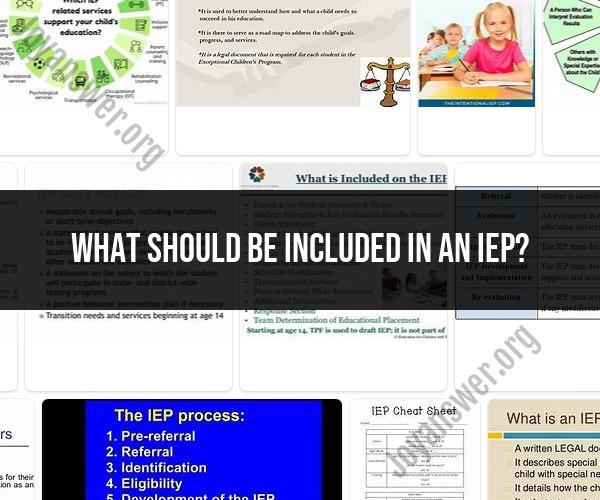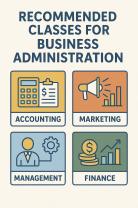What should be included in an IEP?
An Individualized Education Program (IEP) is a personalized plan designed to meet the unique educational needs of students with disabilities. Building effective IEPs involves collaboration among educators, parents, and other specialists. Here are the essential components and guidelines for creating effective IEPs:
1. Present Level of Performance (PLOP):Assess the student's current academic, social, and functional abilities. This forms the baseline for setting appropriate goals and determining needed accommodations.
2. Measurable Goals and Objectives:Develop specific, measurable, achievable, relevant, and time-bound (SMART) goals that address the student's academic and functional needs. Each goal should have clear objectives outlining the steps to achieve it.
3. Special Education and Related Services:Outline the specialized instruction, support services, and accommodations the student will receive. This may include speech therapy, occupational therapy, or assistive technology.
4. Accommodations and Modifications:List the accommodations and modifications that will be provided to help the student access the curriculum and demonstrate their knowledge. Accommodations don't change the content, while modifications may alter the content.
5. Least Restrictive Environment (LRE):Determine the appropriate educational setting where the student can receive support while being included with their peers to the greatest extent possible.
6. Transition Services (for older students):For students approaching high school age, outline transition services and goals to help them transition smoothly into post-secondary education, employment, or independent living.
7. Parent and Student Involvement:Collaborate with parents or guardians and, when appropriate, involve the student in the IEP development process. Their input is essential to ensure the plan aligns with the student's needs and strengths.
8. Evaluation and Progress Monitoring:Specify how the student's progress will be assessed and how frequently progress will be reported to parents. Regular assessment ensures goals are being met and informs adjustments to the IEP.
9. Annual Goals and Objectives:Set clear goals for the entire academic year, breaking them down into smaller objectives. This provides a roadmap for tracking the student's progress.
10. Special Considerations:Address any specific considerations unique to the student's disability, such as behavior intervention strategies, communication needs, and health-related concerns.
11. Signature and Review:Ensure all parties involved sign the IEP, indicating agreement and understanding of the plan's components. Regular review and revision of the IEP are crucial to keep it relevant and effective.
12. Clear and Understandable Language:Write the IEP in clear and jargon-free language that all team members, including parents, can easily understand.
13. Consistency with Standards:Ensure that the IEP aligns with state and federal special education laws and regulations.
14. Cultural Sensitivity:Consider cultural factors that may impact the student's learning experience and ensure that the IEP takes these factors into account.
15. Individualized Approach:Remember that each IEP is unique to the student. Customization is essential to address the specific strengths, needs, and goals of the individual.
Building effective IEPs requires a collaborative approach, with open communication among all stakeholders. Regular communication and monitoring of the student's progress help ensure the IEP remains effective and supportive of the student's educational journey.












